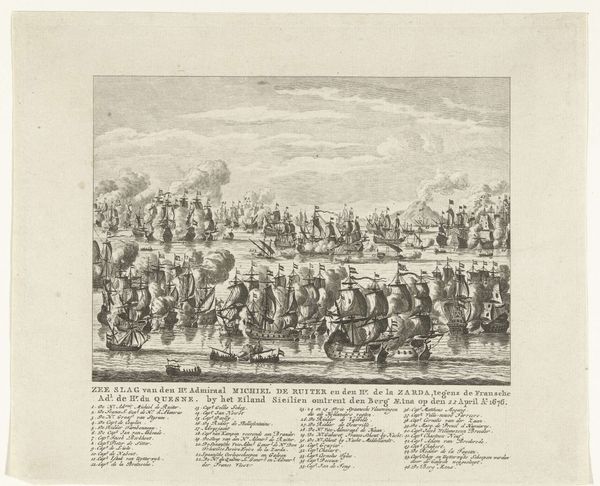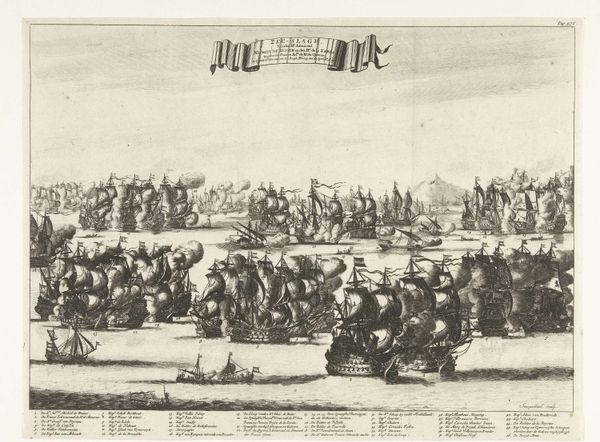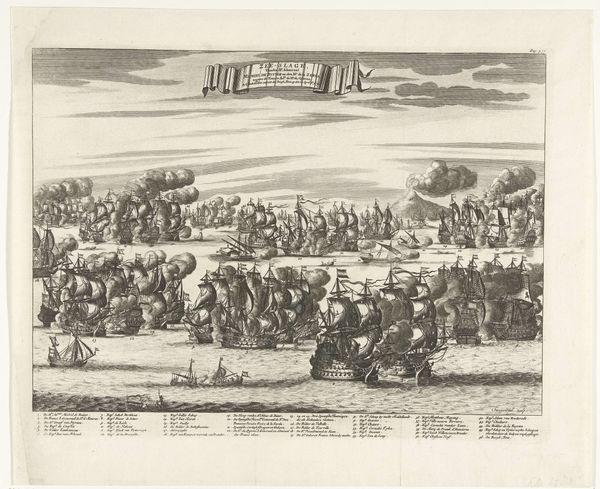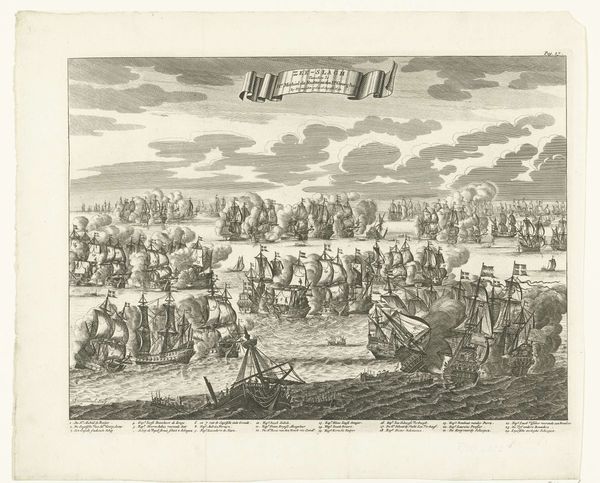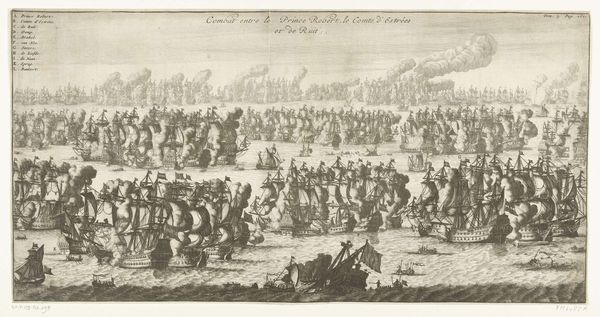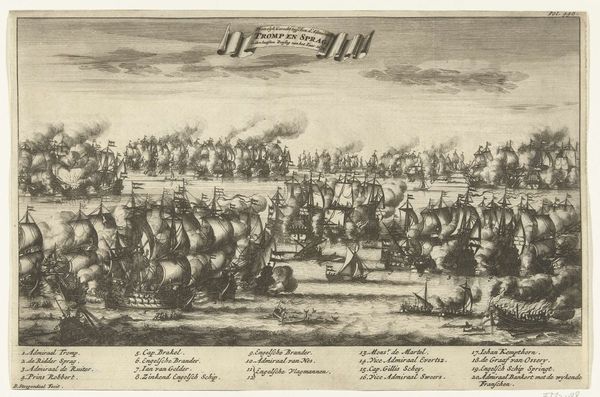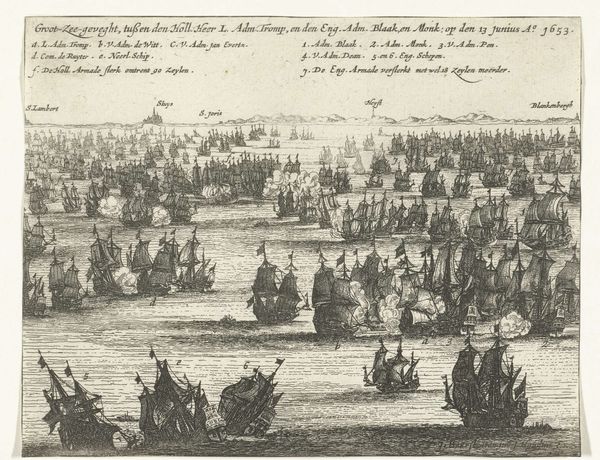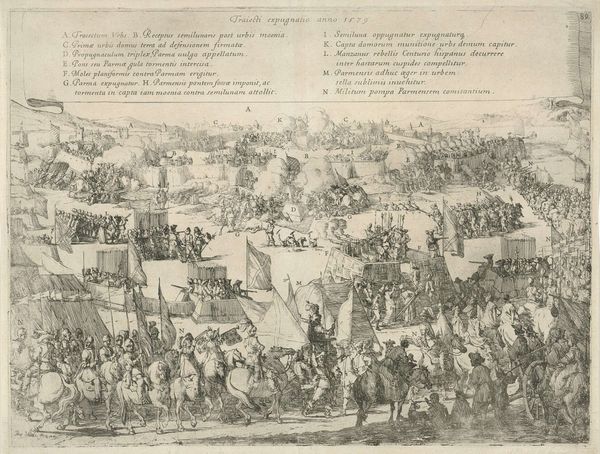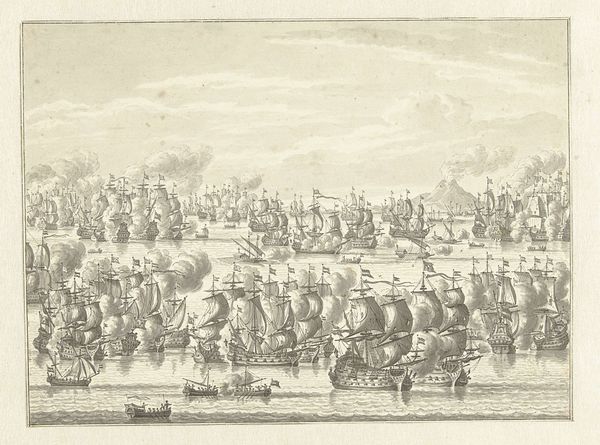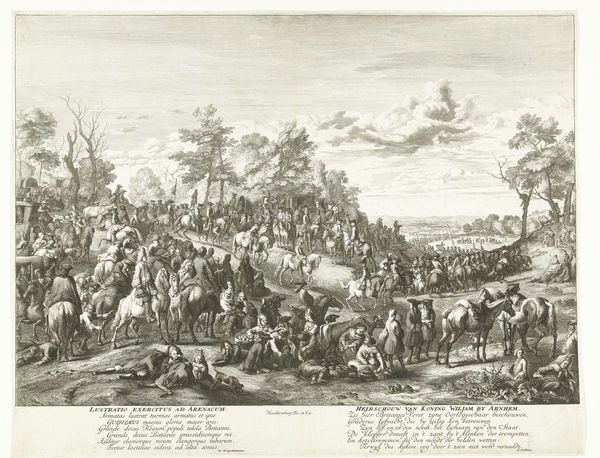
Dimensions: height 225 mm, width 275 mm
Copyright: Rijks Museum: Open Domain
Curator: This engraving, dating from 1784-1786, depicts the "Naval Battle off Plymouth, 1652." It’s credited to Daniël Vrijdag. A bustling seascape rendered with fine lines. What stands out to you? Editor: The sheer density. So many ships crammed into this relatively small space—it creates a real sense of chaos and conflict. It's hard to imagine the experience of being there, the noise and fear. Curator: Indeed. And chaos was certainly part of naval battles. This print captures a crucial moment during the First Anglo-Dutch War. It highlights the Dutch fleet, commanded by Michiel de Ruyter, clashing with the English fleet led by George Ayscue. Editor: You know, looking closer, I'm struck by how formalized the battle seems, despite the supposed chaos. Each ship is meticulously rendered, almost like pieces on a game board. Is that an intentional representation of 18th-century power structures? Curator: Absolutely. Prints like this weren't just about documenting history. They were about constructing national narratives, reinforcing notions of naval power, and lionizing figures like de Ruyter. Remember, the Dutch Golden Age was a key part of their identity. Editor: So it's less about a realistic portrayal of battle and more about creating a heroic image, almost a national myth? Curator: Precisely. The print romanticizes naval combat. We rarely see the brutal reality of war—the injured, the dead, the suffering. It's a sanitised, patriotic vision crafted for public consumption. Editor: Which makes you wonder about its accessibility. Was it intended for mass distribution or consumption by the elite? Curator: Prints like this would have circulated among the middle and upper classes. They were a relatively affordable way to own a piece of history, to engage with the national story being constructed. Editor: The detail in the ships is quite impressive, really highlighting maritime capabilities. It’s a powerful projection of maritime dominance for sure, while also conveniently ignoring the violence of colonial trade that fuelled the Dutch economy. Curator: A key reminder that history, as presented, always serves a particular viewpoint and context. Thank you, this print and your insights offer so much food for thought regarding historical storytelling and visual culture. Editor: Indeed, an aestheticized depiction of power leaves many of us with a somber impression about the real battles fought and the historical forces that drove it all.
Comments
No comments
Be the first to comment and join the conversation on the ultimate creative platform.
